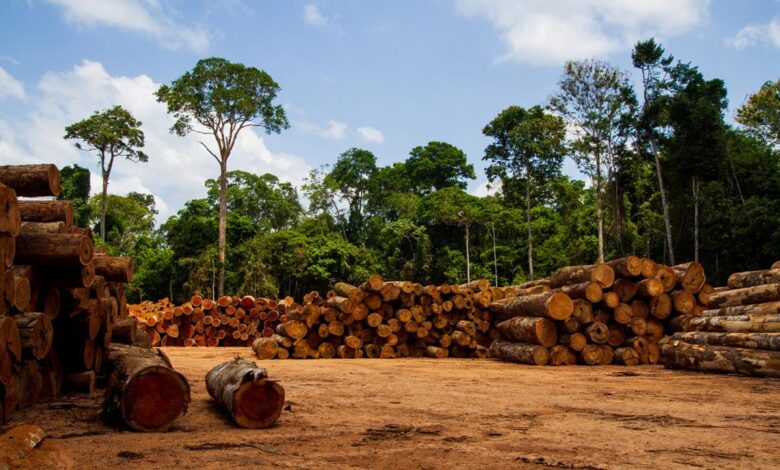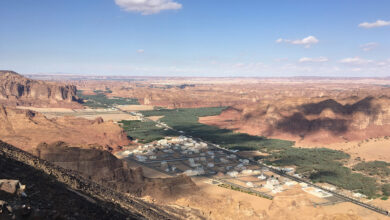The Sustainable Use of Natural Resources: The Governance Challenge

Balancing Rights and Interests over Natural Resources
Determining how people can—and should— access, benefit from, participate in decision-making on, and have responsibility over natural resources has been shaped by concepts such as property and rights.
On the one hand, property rights divide lands and territories into: private property, where rights are held by individuals or companies; common property, where rights are shared by a community; public property, where rights are held by government; and open access areas, where no specific rights are assigned (Aggrawal & Elbow, 2006). Property rights are closely tied to rights over natural resources, which include the right to use a resource, such as hunting in a forest; or management rights that grant authority to decide on use, for example imposing seasonal hunting restrictions. In terms of governance, different types of ownership and access rights can be held simultaneously by several actors: a wetland can be owned by the state, managed by a local council, and used as fishing grounds by communities.
The notion of tenure security indicates that an individual’s rights over natural resources and specific lands are recognized and enforceable. These rights are key to avoiding conflict and fostering social security as well as long-term sustainable resource use.
On the other hand, there are individual and collective rights regarding quality of life. The United Nations Declaration on the Rights of Peasants and Other People Working in Rural Areas (UNDROP), for example, stipulates that “[p]easants and other people working in rural areas have the right to have access to and to use in a sustainable manner the natural resources present in their communities that are required to enjoy adequate living conditions” and that they “have the right to participate in the management of these resources” (Article 5). UNDROP highlights the importance of small-scale sustainable practices, and the need to strengthen the protection and recognition of groups who have experienced historical marginalization and violent conflict over resource use.
Similarly, the UN Declaration on the Rights of Indigenous Peoples (UNDRIP) and International Labour Organization (ILO) Convention 169 (ILO 169) protect the individual and collective rights of Indigenous Peoples. UNDRIP Article 8(2b) stipulates that states shall prevent and provide redress for “any action which has the aim or effect of dispossessing them of their lands, territories or resources.” Both texts also speak to the importance of ensuring the free, prior, and informed consent (FPIC) of Indigenous Peoples in relation to the use of their lands, with UNDRIP Articles 11(2) and 28 underscoring Indigenous Peoples’ right to redress for past FPIC infringements.
There is also the right to a healthy environment, enshrined in regional treaties, including procedural rights on access to information and decision-making processes, as well as the right to clean air, a safe climate, healthy food, safe water, a safe environment for work and play, and healthy ecosystems (UN Human Rights Council, 2019). Ultimately, the effectiveness of these advances in international law depends upon national governments’ readiness to implement them. To date, only 23 countries have ratified ILO 169, and many countries around the world have yet to adopt appropriate legislation to protect the rights enshrined in UNDRIP. To do so, and to protect associated rights under UNDROP and the right to a healthy environment, governments must adopt robust reforms across national policies, laws, programmes, and institutions that prompt shifts in country priorities and ensure the mainstreaming of environmental and social concerns across sectors, focusing especially on empowering marginalized groups. To ensure that decisions across society better address ecological and social wellbeing, prominent actors, including the UN Special Rapporteur on Human Rights and the Environment, are calling for human rights-based approaches to natural resource governance.
Overall, this constitutes a complex architecture, one that is dynamic in nature, often builds on customary practices, and requires balancing “competing” rights and interests through law and policy. Structures are seldom straightforward: there are often overlapping or even conflicting systems in place, and this influences the sustainability of resource governance.
States play a central role in balancing rights and interests. Regulations addressing the extractive sector determine how a corporation’s exclusive user rights may impact the general population’s right to a safe and healthy environment. Approaches to this balancing act, and the distribution, recognition, and safeguarding of rights, and the implementation of associated responsibilities, vary across states and change over time.
At times, this balance of interests favors more powerful actors. Stemming from historical legacies and trajectories in decision-making, structural inequalities exist across resource access, ownership, and tenure security (Oxfam, 2014). These issues disproportionately impact women, rural communities, and Indigenous Peoples, who are often cast as passive recipients to policy change, as opposed to rights holders and key actors in the sustainable management of natural resources.
Women have faced historical exclusion from decision-making processes related to land and resources (UN Women, 2020). Due to enduring patriarchal gender norms across the world, they hold less control than men over the lands and resources they traditionally use and rely on for their livelihoods and wellbeing. Based on an analysis of 180 countries, the Organisation for Economic Co-operation and Development (OECD) found that out of the 164 countries that explicitly recognize women’s rights to own, use, and make decisions regarding land on par with men, only 52 countries guarantee these rights in both law and practice (OECD, 2019). As such, it is important that states ensure that women’s rights over natural resources are realized and protected through appropriate mechanisms.
Indigenous Peoples also struggle to have their rights recognized. For instance, in Finland, Sweden, and Canada, legal disputes have arisen over the challenge of balancing between states’ sovereign right to govern and exploit natural resources, and Indigenous Peoples’ rights to self-determination over traditional territories and customary resource use. Globally, conflicts have also emerged over specific policy approaches, such as conservation methods relying on models of strictly protected areas, or the expansion of large infrastructure, such as the installation of hydraulic dams, which contribute to the displacement of Indigenous and rural peoples.
The expansion of international investment treaties further aggravates existing power differentials. In fostering the commercialization and privatization of land and resources, and by often prioritizing investors’ rights and interests over those held by local peoples, they risk restricting public-interest policies and undermine the public’s access to remedial action (Cotula, 2015, 2016).


